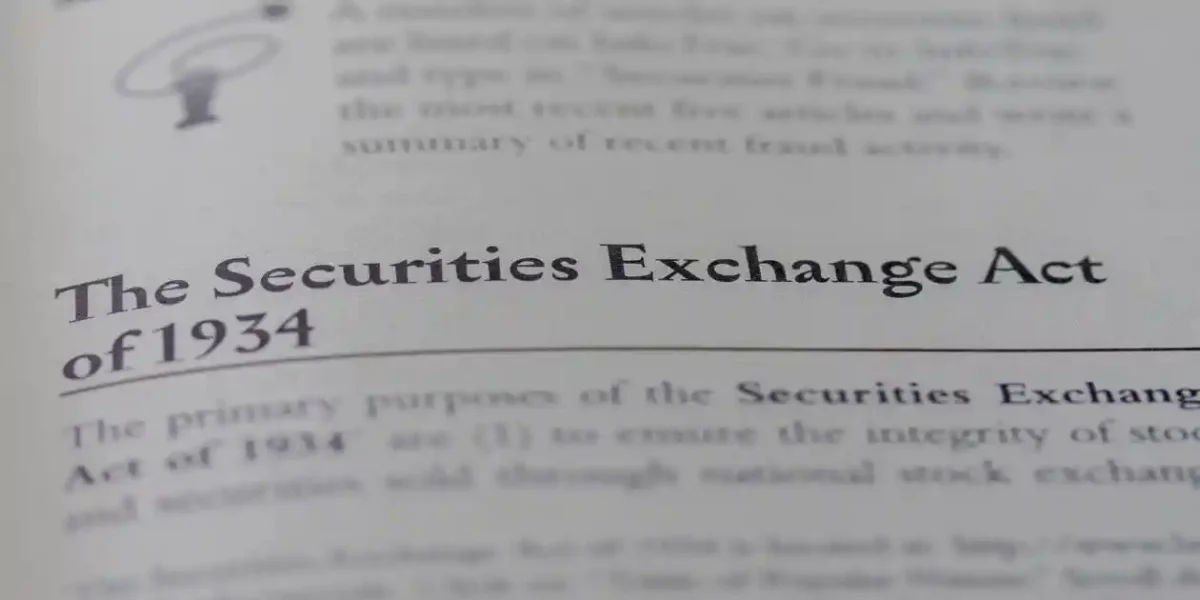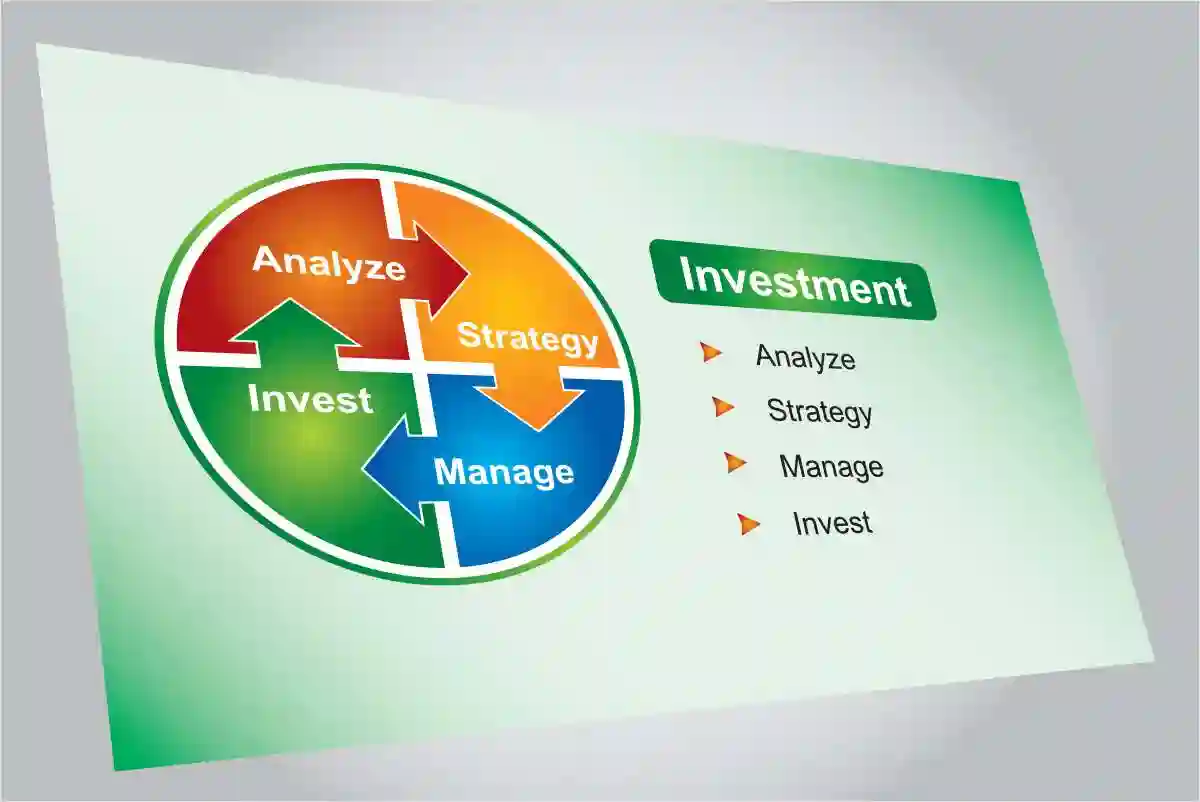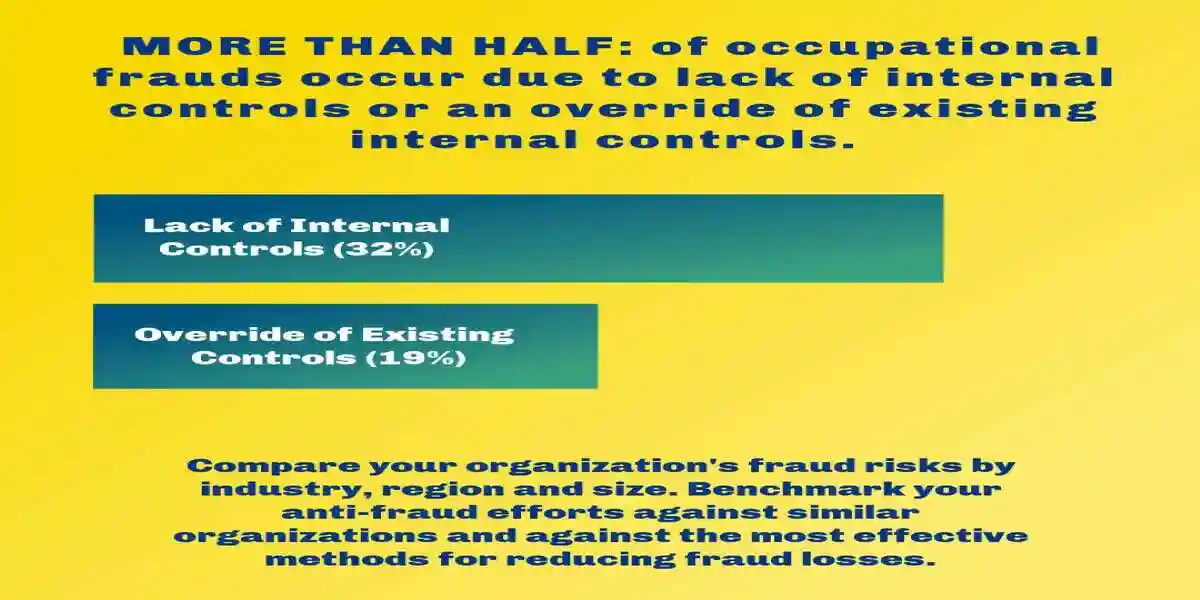Introduction to the Cytokinetics Class Action Lawsuit:
- The Cytokinetics Class Action Lawsuit represents a pivotal legal development that has captured the attention of shareholders and market participants invested in Cytokinetics, Incorporated (NASDAQ: CYTK). This securities litigation centers on serious allegations regarding potential violations of securities laws and corporate governance standards, raising significant concerns about the company’s internal controls and transparency in its communications with investors. The lawsuit’s implications extend beyond immediate financial impacts, potentially affecting long-term shareholder value and market confidence in the company’s management practices.
- This comprehensive analysis aims to provide shareholders with detailed insights into the Cytokinetics Class Action Lawsuit‘s background, implications, and available legal remedies while examining the broader context of securities litigation and corporate governance standards that protect investor interests.
Understanding Securities Fraud Class Action Lawsuits
Securities fraud class action lawsuits serve as crucial mechanisms for maintaining market integrity and protecting shareholder interests. These legal proceedings fulfill several essential functions:
- Hold companies and their executives accountable for potential violations of securities laws and breaches of corporate governance standards
- Provide meaningful financial compensation to investors who may have suffered losses due to alleged fraudulent activities
- Strengthen internal controls and corporate governance practices across the market through deterrence
- Address systemic issues related to financial disclosure and transparency
Common triggers for securities litigation include:
- Insider trading violations that undermine market fairness
- False or misleading financial statements that distort company performance
- Material omissions in corporate communications that affect investor decision-making
- Inadequate internal controls leading to misrepresentation of financial position
The power of the class action mechanism
The class action framework provides several distinct advantages in securities litigation:
- Enables individual shareholders to pursue legal remedies collectively, overcoming resource limitations
- Creates economies of scale in litigation, making it economically viable to pursue claims
- Ensures consistent legal outcomes across all affected investors
- Strengthens negotiating position with defendant companies
- Promotes efficient resolution of complex securities disputes
Navigating the legal complexities
Securities litigation involves intricate legal challenges that require careful navigation:
- Meeting stringent pleading requirements under the Private Securities Litigation Reform Act
- Establishing loss causation and damages with precision
- Surviving motions to dismiss through compelling evidence and legal arguments
- Managing complex discovery processes and expert testimony
- Understanding the interplay between securities laws and corporate governance requirements
Overview of the Cytokinetics Class Action Lawsuit
The Cytokinetics Class Action Lawsuit seeks to represent a class of investors who purchased or acquired company securities during a specified class period from December 27, 2023, to May 6, 2025. Filed in the Northern District of California, the Cytokinetics Class Action Lawsuit alleges significant deficiencies in the company’s internal controls and corporate governance practices, particularly concerning disclosures about their lead drug candidate, aficamten.
Allegations of Misleading Statements
The core allegations of the Cytokinetics Class Action Lawsuit focus on several key areas:
- Material misrepresentations regarding the timeline and status of the New Drug Application (NDA) submission to the FDA
- Failure to maintain adequate internal controls over financial reporting and disclosure procedures
- Omission of critical information about the Risk Evaluation and Mitigation Strategy (REMS) requirements
- Potentially misleading statements about the company’s readiness for FDA review and approval
The Cytokinetics Class Action Lawsuit specifically alleges that these misrepresentations and omissions violated federal securities laws and corporate governance standards, leading to artificial inflation of the company’s stock price.
Impact of the Cytokinetics Class Action Lawsuit on Investors
The revelation of these alleged misrepresentations has had substantial consequences:
- Significant decline in shareholder value following corrective disclosures
- Erosion of investor confidence in management’s transparency and corporate governance practices
- Questions about the effectiveness of the company’s internal controls
- Potential long-term implications for the company’s drug development pipeline and market position
- The lawsuit highlights the critical importance of robust internal controls and transparent corporate governance practices in protecting shareholder interests. It serves as a reminder that effective corporate governance and strong internal controls are essential safeguards against securities litigation risks and potential shareholder losses.
- The Cytokinetics Class Action Lawsuit exemplifies how alleged breakdowns in corporate governance and internal controls can lead to significant securities litigation, affecting both individual investors and the broader market’s confidence in corporate disclosure practices. As this Cytokinetics Class Action Lawsuit unfolds, it will likely influence future discussions about the importance of maintaining robust internal controls and corporate governance standards in the biopharmaceutical industry.
- On May 1, 2025, Cytokinetics disclosed that the FDA had extended the Prescription Drug User Fee Act (PDUFA) action date for aficamten, triggering a substantial market reaction.
- This announcement led to a precipitous decline of nearly 13% in the company’s stock price, significantly impacting shareholder value and raising serious concerns about the company’s internal controls and corporate governance practices.
- The extension of the PDUFA date represented a material setback in the drug’s approval timeline, causing investors to reassess their positions and market expectations.
- The negative market sentiment was further intensified when the company’s CEO made subsequent admissions regarding management’s strategic decision to submit the New Drug Application (NDA) without the necessary Risk Evaluation and Mitigation Strategy (REMS).
- This revelation raised significant questions about the effectiveness of the company’s internal controls and decision-making processes, highlighting potential weaknesses in corporate governance oversight that could expose shareholders to increased securities litigation risks.
The Lead Plaintiff Process in the Cytokinetics Class Action Lawsuit
- Investors who have experienced financial losses due to the alleged fraudulent activities and corporate governance failures have the opportunity to seek appointment as lead plaintiff in this significant securities litigation. This process represents a crucial mechanism for protecting shareholder interests and ensuring proper representation in complex securities cases.
- Under the PSLRA, any investor who purchased Cytokinetics common stock during the specified class period maintains the right to petition the court for appointment as lead plaintiff. This legislative framework strengthens internal controls and corporate governance by empowering shareholders to take an active role in securities litigation.
- The appointed lead plaintiff assumes the vital responsibility of representing the collective interests of all class members throughout the litigation process, ensuring that proper corporate governance standards are upheld and that internal controls are strengthened to prevent future violations.
Key lawsuit information:
Case Caption: Seidman v. Cytokinetics, Incorporated, No. 25-cv-07923 (N.D. Cal.)
Class Period: December 27, 2023 – May 6, 2025
Company: Cytokinetics, Incorporated (NASDAQ: CYTK)
Allegations: The securities litigation centers on allegations that the company and its executives violated federal securities laws through false and/or misleading statements and material omissions, highlighting potential deficiencies in internal controls and corporate governance practices.
Lead Plaintiff Deadline: November 17, 2025
Criteria for Lead Plaintiff
- Prospective lead plaintiffs must demonstrate the largest financial interest in the outcome of the securities litigation while also establishing their typicality and adequacy as class representatives. This requirement ensures that the lead plaintiff has sufficient motivation to actively oversee the litigation and protect class interests.
- It’s essential for shareholders to understand that their ability to recover damages through this securities litigation is not contingent upon serving as lead plaintiff. The lead plaintiff process primarily focuses on ensuring effective representation and strong corporate governance oversight.
Filing Deadlines
- Shareholders interested in participating in the Cytokinetics Class Action Lawsuit must act decisively, as the deadline for filing lead plaintiff motions is set for November 17, 2025. This timeline reflects the urgency of addressing potential corporate governance failures and strengthening internal controls.
- Affected investors should prioritize gathering comprehensive documentation of their transactions and consulting with experienced securities litigation counsel to ensure their rights are properly protected and preserved throughout the legal process.
The Benefits of Serving as a Lead Plaintiff in the Cytokinetics Lawsuit
- Influencing litigation strategy: Lead plaintiffs play a crucial role in shaping key strategic decisions throughout the securities litigation process, including whether to pursue settlement negotiations or proceed to trial. This position allows shareholders to actively participate in addressing corporate governance concerns and strengthening internal controls.
- Negotiating more competitive fees: Lead plaintiffs can leverage their position to negotiate more favorable attorney fees and reduce overall litigation costs, ultimately maximizing the potential recovery for all class members affected by alleged corporate governance failures.
- Active participation in the case: Lead plaintiffs maintain the right to review critical court filings, monitor case progress, and engage in detailed strategy discussions with legal counsel, ensuring thorough oversight of the securities litigation process.
- Leading settlement discussions: The lead plaintiff’s involvement extends to participation in mediation sessions and settlement negotiations, requiring their approval before any proposed settlement can be presented to the court for consideration. This responsibility helps ensure that any resolution adequately addresses corporate governance reforms and strengthens internal controls to prevent future violations.
- Through this comprehensive lead plaintiff process, the Cytokinetics Class Action Lawsuit demonstrates how securities litigation serves as a vital mechanism for enforcing corporate governance standards and maintaining robust internal controls in public companies. The process empowers shareholders to take an active role in protecting their investments while promoting transparency and accountability in corporate management practices.
- No financial risk: Participating in Cytokinetics Class Action Lawsuit as a lead plaintiff typically involves minimal financial exposure for shareholders. Lead counsel in these cases operates on a contingency fee basis, advancing all litigation costs and expenses throughout the proceedings. This arrangement means attorneys only receive compensation if they successfully secure a settlement or favorable judgment. Even then, both legal fees and expense reimbursements are paid from the settlement fund rather than the lead plaintiff’s personal assets, ensuring robust protection of shareholder interests while maintaining strong corporate governance standards.
The Responsibilities the Lead Plaintiff Will Have in the Cytokinetics Class Action Lawsuit
- Overseeing lead counsel: As lead plaintiff, you assume the critical responsibility of selecting, monitoring, and overseeing the law firm representing the class. This oversight role requires regular evaluation of counsel’s performance, ensuring they maintain appropriate internal controls throughout the Cytokinetics Class Action Lawsuit and vigorously pursue the class’s interests in addressing alleged corporate governance failures.
- Reviewing legal documents: A fundamental aspect of the lead plaintiff’s duties involves carefully reviewing and providing substantive feedback on significant court filings before submission. This review process helps ensure that all legal documents accurately represent the class’s interests and effectively address concerns about internal controls and corporate governance practices. The lead plaintiff’s input proves particularly valuable in reviewing complaints, motions, and settlement documentation.
- Discussing strategy: Lead plaintiffs engage in direct strategic consultations with lead counsel throughout the securities litigation process. These discussions cover crucial aspects such as litigation approach, discovery priorities, and settlement considerations. Regular strategic meetings help ensure that the case progresses effectively while maintaining focus on strengthening corporate governance standards and internal controls.
- Potential participation in legal events: The role may require attendance at various legal proceedings, including depositions, hearings, and mediation sessions. While not all events require the lead plaintiff’s physical presence, active participation in key proceedings demonstrates commitment to the Cytokinetics Class Action Lawsuit and helps ensure thorough oversight of the process. This involvement strengthens the securities litigation’s effectiveness in addressing corporate governance concerns.
- Input on settlement decisions: The lead plaintiff plays a pivotal role in evaluating and approving potential settlement terms. This responsibility includes assessing whether proposed settlements adequately address corporate governance reforms and provide fair compensation for class members. Lead plaintiffs must carefully weigh the benefits of immediate recovery against the potential advantages of continued litigation, considering factors such as:
- The strength of evidence supporting claims of internal control deficiencies
- The likelihood of establishing liability through securities litigation
- The defendant’s financial capacity to pay a judgment
- The proposed corporate governance reforms included in settlement terms
- The potential risks and costs of continued litigation
- The overall fairness of the proposed settlement to class members
The Legal Requirements for Prevailing in the Cytokinetics Class Action Lawsuit
Material misrepresentation or omission
- A false statement or concealment: Securities litigation requires proof that defendants made public statements containing untrue material facts or failed to disclose material information necessary to prevent statements from being misleading. This element focuses on evaluating how corporate governance failures and inadequate internal controls may have contributed to false or misleading disclosures.
- Materiality: The concept of materiality centers on whether a reasonable investor would consider the information important when making investment decisions. This objective standard evaluates the significance of the alleged misstatements or omissions within the broader context of corporate governance and internal controls, rather than focusing on individual investor preferences.
Scienter
- Culpable state of mind: Scienter represents a critical element in securities litigation, requiring evidence of defendants’ knowledge or reckless disregard of wrongdoing. This mental state often manifests through deliberate circumvention of internal controls or willful disregard of corporate governance standards.
- Intent to deceive: Plaintiffs must demonstrate that defendants acted with specific intent to deceive, manipulate, or defraud investors. Evidence of such intent often emerges from patterns of behavior that suggest systematic disregard for proper internal controls and corporate governance practices.
- Recklessness: While mere negligence proves insufficient, evidence of severe recklessness in maintaining internal controls or adhering to corporate governance standards can satisfy the scienter requirement. This includes situations where defendants consciously disregarded obvious risks to investors.
Connection to a securities transaction
- In connection with the purchase or sale: The fraudulent conduct alleged in the Cytokinetics Class Action Lawsuit must directly relate to securities transactions, demonstrating how corporate governance failures and inadequate internal controls impacted investment decisions. This connection establishes the crucial link between alleged misconduct and investor losses.
Reliance
- Justifiable dependence on the statement: Plaintiffs must establish that investment decisions relied on the allegedly fraudulent statements or omissions. This reliance element connects deficiencies in internal controls and corporate governance to actual investment losses.
- “Fraud-on-the-market” theory: This legal doctrine presumes that efficient markets incorporate all public information into security prices, allowing plaintiffs to establish reliance without proving direct awareness of specific misstatements. Defendants in the Cytokinetics Class Action Lawsuit may attempt to rebut this presumption by demonstrating that alleged corporate governance failures did not impact market prices.
Economic loss
- Tangible financial harm: Securities litigation requires proof of actual financial losses resulting from the alleged misconduct. Simply identifying corporate governance failures or internal control deficiencies without demonstrating corresponding economic damage proves insufficient for recovery.
- Out-of-pocket damages. A fundamental measure of economic harm in securities litigation involves calculating the difference between what investors actually paid for securities and their true value at the time of purchase had all material information been accurately disclosed. This calculation requires careful analysis of how corporate governance failures and deficient internal controls contributed to artificial price inflation. Expert testimony often proves essential in quantifying these damages by modeling how proper disclosures would have impacted market pricing.
Loss causation
- The “what if” scenario. Loss causation represents a critical element that establishes the direct causal connection between fraudulent misstatements or omissions and investors’ economic losses. The landmark Supreme Court decision in Dura Pharmaceuticals v. Broudo definitively established that merely alleging the payment of an artificially inflated price proves insufficient. Instead, plaintiffs must demonstrate how specific corporate governance failures and breakdowns in internal controls directly led to investment losses. This requires carefully tracing the chain of causation from misconduct to economic harm.
- Corrective disclosure. Proving loss causation typically requires demonstrating that stock prices declined significantly following revelations of the truth about previously misleading statements or omissions. This process involves:
- Identifying specific corrective disclosures that revealed deficiencies in internal controls or corporate governance
- Analyzing the market’s reaction to these revelations through detailed event studies
- Isolating price declines attributable to fraud-related disclosures versus unrelated market factors
- Establishing the statistical significance of observed price movements
- Quantifying damages based on price drops directly linked to corrective disclosures
- Plaintiffs must carefully differentiate between losses caused by fraudulent conduct versus those stemming from general market conditions, industry-wide challenges, or company-specific issues unrelated to the alleged misconduct. This complex analysis often requires expert testimony from financial economists who can employ sophisticated statistical methods to isolate fraud-related damages.
Legal Representation and Resources
Shareholders who have suffered substantial financial losses and wish to serve as lead plaintiff in the Cytokinetics Class Action Lawsuit, or who simply seek to understand their rights as investors, are encouraged to contact attorney Timothy L. Miles at the Law Offices of Timothy L. Miles. Consultations are available at no cost by calling 855/846-6529 or via email at [email protected] (24/7/365).
Understanding Securities Fraud
Securities fraud encompasses a broad spectrum of deceptive practices designed to mislead investors about a company’s true financial condition, operational performance, or compliance with regulatory requirements. These schemes often involve:
- Deliberate manipulation of financial statements
- Intentional omission of material information
- Misrepresentation of significant business developments
- Circumvention of established internal controls
- Violations of corporate governance standards
The Cytokinetics Class Action Lawsuit highlights how alleged misleading statements regarding NDA submissions and subsequent stock price impacts exemplify the serious nature of securities fraud and its potential to harm investor interests.
Common Types of Securities Fraud
Common Financial Statement Fraud Schemes
| Scheme Type | Description | Example |
| Fictitious Revenue | Recording non-existent sales through false documentation and phantom customers | Creating counterfeit sales contracts or engaging in fraudulent bill-and-hold arrangements that lack economic substance |
| Premature Revenue Recognition | Recognizing revenue before satisfying essential accounting criteria | Accelerating revenue recognition before completing contracted service obligations or product delivery requirements |
| Channel Stuffing | Forcing excessive inventory into distribution channels to artificially inflate sales | Providing unusual incentives to distributors to accept unnecessary inventory levels that exceed reasonable demand |
| Asset Overstatement | Deliberately inflating reported asset values through accounting manipulation | Recording phantom inventory or applying inadequate depreciation to overstate asset carrying values |
| Liability Concealment | Hiding financial obligations through improper accounting treatments | Deliberately understating debt levels or warranty obligations through accounting manipulation |
| Material Omissions | Withholding critical information required for informed investment decisions | Failing to disclose significant related party transactions or contingent liabilities |
| Journal Entry Manipulation | Falsifying accounting records through improper manual adjustments | Making unsupported last-minute entries near reporting deadlines to manipulate results |
Misrepresentation of Financial Information: Companies may deliberately provide false or misleading financial statements to artificially inflate stock prices, often through:
- Revenue recognition manipulation
- Expense underreporting
- Asset value inflation
- Liability concealment
- Cash flow misrepresentation
Omissions of Material Facts: Securities fraud frequently involves failing to disclose critical information that reasonable investors would consider important in making investment decisions. This includes:
- Known regulatory challenges
- Significant operational problems
- Material weaknesses in internal controls
- Pending litigation or investigations
- Adverse business developments
Insider Trading: Corporate executives may engage in unauthorized trading based on material non-public information, violating fundamental principles of market fairness and corporate governance. This can involve:
- Trading ahead of significant announcements
- Tipping off others about non-public information
- Manipulating disclosure timing for personal gain
- Exploiting knowledge of internal control weaknesses
Consequences of Securities Fraud
The repercussions of securities fraud extend far beyond immediate financial losses, impacting:
- Shareholder value through significant stock price declines
- Market confidence in corporate governance systems
- Company reputation and stakeholder trust
- Regulatory compliance costs and penalties
- Exposure to securities litigation
Companies found engaging in fraudulent practices often face:
- Substantial monetary penalties
- Costly regulatory investigations
- Expensive securities litigation
- Mandatory corporate governance reforms
- Enhanced oversight requirements
THE SECURITIES LITIGATION PROCESS
| Filing the Complaint | A lead plaintiff files a lawsuit on behalf of similarly affected shareholders, detailing the allegations against the company. |
| Motion to Dismiss | Defendants typically file a motion to dismiss, arguing that the complaint lacks sufficient claims. |
| Discovery | If the motion to dismiss is denied, both parties gather evidence, documents, emails, and witness testimonies. This phase can be extensive. |
| Motion for Class Certification | Plaintiffs request that the court to certify the lawsuit as a class action. The court assesses factors like the number of plaintiffs, commonality of claims, typicality of claims, and the adequacy of the proposed class representation. |
| Summary Judgment and Trial | Once the class is certified, the parties may file motions for summary judgment. If the case is not settled, it proceeds to trial, which is rare for securities class actions. |
| Settlement Negotiations and Approval | Most cases are resolved through settlements, negotiated between the parties, often with the help of a mediator. The court must review and grant preliminary approval to ensure the settlement is fair, adequate, and reasonable. |
| Class Notice | If the court grants preliminary approval, notice of the settlement is sent to all class members, often by mail, informing them about the terms and how to file a claim. |
| Final Approval Hearing | The court conducts a final hearing to review any objections and grant final approval of the settlement. |
| Claims Administration and Distribution | A court-appointed claims administrator manages the process of sending notices, processing claims from eligible class members, and distributing the settlement funds. The distribution is typically on a pro-rata basis based on recognized losses. |
The Role of Regulatory Bodies
Regulatory authorities, particularly the Securities and Exchange Commission (SEC), play a vital role in:
- Investigating potential securities fraud
- Enforcing securities laws and regulations
- Monitoring corporate governance practices
- Assessing internal control adequacy
- Protecting investor interests
The SEC maintains broad investigative powers and can impose significant penalties, including:
- Monetary fines
- Trading suspensions
- Officer and director bars
- Mandatory corporate reforms
- Ongoing compliance monitoring
Importance of Compliance
Maintaining robust compliance programs proves essential for:
- Preventing securities fraud
- Strengthening internal controls
- Enhancing corporate governance
- Reducing litigation risk
- Protecting shareholder interests
Companies must prioritize:
- Accurate financial reporting
- Timely material disclosures
- Effective internal controls
- Strong corporate governance
- Regular compliance training
Protecting Your Investments
Investors must remain vigilant in safeguarding their investments through:
- Regular portfolio monitoring
- Due diligence reviews
- Corporate governance assessment
- Internal control evaluation
- Securities litigation awareness
Effective protection strategies include:
- Analyzing financial statements
- Monitoring corporate disclosures
- Evaluating management credibility
- Assessing governance structures
- Understanding legal remedies
Strategies for Investor Protection
Here are comprehensive strategies investors should consider to protect their interests and navigate potential securities fraud:
Conduct Thorough Due Diligence
Before making any investment decisions, shareholders must conduct extensive research focusing on:
- Comprehensive analysis of the company’s financial statements, paying special attention to revenue recognition practices and internal controls
- Detailed evaluation of management’s track record in maintaining strong corporate governance
- Assessment of the company’s regulatory compliance history and any past securities litigation
- Review of analyst reports and independent research highlighting potential red flags
- Examination of the company’s corporate governance structure, including board independence and audit committee effectiveness
Warning signs that warrant further investigation include:
- Frequent changes in executive leadership or board composition
- History of regulatory violations or securities litigation
- Weak or ineffective internal controls
- Inconsistent financial reporting patterns
- Unusual related-party transactions
Monitor Company Communications and Disclosures
Maintaining vigilant oversight of company communications proves essential:
- Carefully review all SEC filings, particularly Forms 10-K, 10-Q, and 8-K
- Analyze earnings calls transcripts and management presentations
- Track company press releases and public statements
- Monitor regulatory investigations or enforcement actions
- Follow securities litigation developments affecting the company
Pay particular attention to:
- Changes in accounting policies or practices
- Modifications to internal controls
- Corporate governance updates
- Management’s discussion of operational challenges
- Disclosure of material risks or uncertainties
Implement Portfolio Diversification Strategies
Effective diversification remains crucial for risk management:
- Spread investments across multiple sectors and industries
- Balance holdings between growth and value stocks
- Consider geographic diversification
- Maintain appropriate position sizes
- Regular portfolio rebalancing
Key diversification principles include:
- Avoiding over-concentration in single companies
- Understanding sector-specific risks
- Monitoring correlation between holdings
- Maintaining liquidity reserves
- Regular risk assessment and rebalancing
Concluding Insights
The Cytokinetics Class Action Lawsuit highlights several critical lessons for investors:
The importance of robust corporate governance and internal controls:
- Strong oversight mechanisms help prevent fraudulent activities
- Effective internal controls reduce operational risks
- Regular audit committee reviews enhance transparency
- Independent board oversight protects shareholder interests
- Whistleblower programs support early fraud detection
Securities litigation serves multiple crucial functions:
- Provides remedies for harmed investors
- Deters corporate misconduct
- Promotes market transparency
- Enhances accountability
- Strengthens investor protection
Frequently Asked Questions About the Cytokinetics Class Action Lawsuit
What triggered the Cytokinetics class action litigation?
The Cytokinetics class action litigation alleges that Cytokinetics made misleading statements regarding its operations and financial health, leading to investor losses when the truth emerged through corrective disclosures.
How can shareholders participate in the Cytokinetics Class Action Lawsuit?
Investors who purchased shares during the specified class period and experienced losses automatically become class members in the Cytokinetics class action litigation. No immediate action is required unless considering lead plaintiff status.
What benefits does the Cytokinetics Class Action Lawsuit offer?
Securities litigation provides several advantages:
- Collective pursuit of legal remedies
- Professional legal representation
- Potential financial recovery
- Corporate governance improvements
- Enhanced shareholder protection
What is the expected timeline for resolution of the Cytokinetics class action litigation?
Securities litigation typically progresses through several stages:
- Initial filing and lead plaintiff selection
- Complaint amendments and motion practice
- Discovery and expert analysis
- Settlement negotiations or trial
- Claims administration and distribution
Contact Timothy L. Miles Today About a Cytokinetics Class Action Lawsuit
If you suffered substantial losses and wish to serve as lead plaintiff of the Cytokinetics class action lawsuit, or just have general questions about you rights as a shareholder, please contact attorney Timothy L. Miles of the Law Offices of Timothy L. Miles, at no cost, by calling 855/846-6529 or via e-mail at [email protected]. (24/7/365).
Timothy L. Miles, Esq.
Law Offices of Timothy L. Miles
Tapestry at Brentwood Town Center
300 Centerview Dr. #247
Mailbox #1091
Brentwood,TN 37027
Phone: (855) Tim-MLaw (855-846-6529)
Email: [email protected]
Website: www.classactionlawyertn.com
Facebook Linkedin Pinterest youtube
Visit Our Extensive Investor Hub: Learning for Informed Investors









